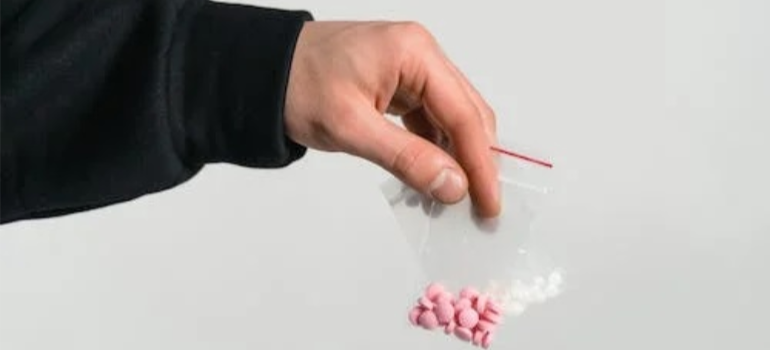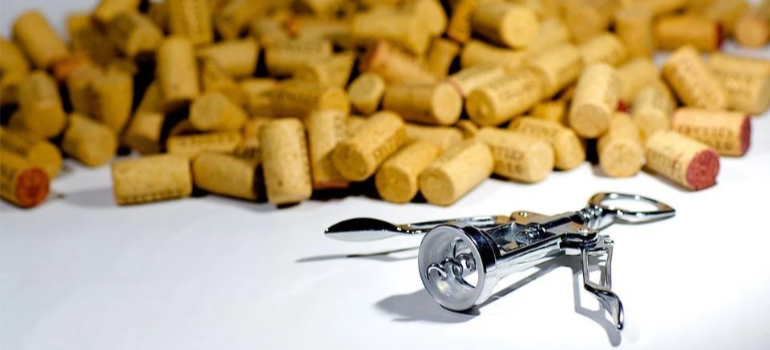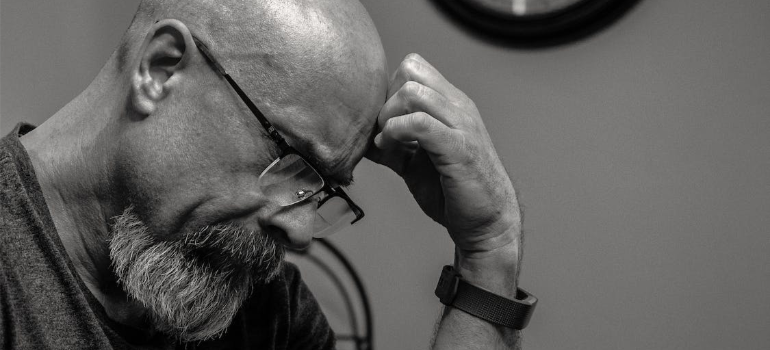One of our most deeply inherent abilities as humans is to spot patterns. This trait has been an evolutionary benefit and continues to benefit us in our everyday lives today. So, when we spot patterns in the field of addiction, it is almost instinctive to draw conclusions. When we see higher concentrations of Substance Use Disorders (SUDs), for instance, it’s easy to assume causation. But are some professions more prone to addiction than others, or are we just observing a correlation? Answers to such questions are never simple or black-and-white. As pioneers among addiction treatment centers in West Virginia, we at Harmony Ridge Recovery have often observed this too. As such, in this article, we’ve combined our experience with ample research to help provide an answer.
Are Some Professions More Prone to Addiction Than Others? – The Discussion
This is quite a complex question with potentially deceiving conclusions. Therefore it requires a complex answer – and as treatment professionals, we must approach it with due care.
For the first part of this exploration, yes, some professions do come with higher rates of addiction. Rather, professionals of specific occupations and of specific fields show higher rates of addiction. This is a crucial distinction to make so as not to draw conclusions early.
To illustrate this, let us explore some initial data.

#1 SUD Rates By Occupation
First, according to NORC and NSC data, there are indeed notable differences in SUD rates across professions. At the same time, some professions show alarming SUD rates all on their own. The top 5 they identify are the following:
- Construction trades and extraction workers – 19.0 %
- Service occupations, except protective – 15.6 %
- Transportation and material moving workers – 13.9%
- Installation, maintenance, and repair workers – 13.5%
- Sales occupations – 13.4%
These figures are quite notable by themselves. The construction industry presents an approximate 1/5, which is quite staggering. Service occupations are not far behind, approaching 1/6 themselves, and others follow suit.

But even comparing them to one another we can notice decent disparities among occupations. To elaborate on this further, consider the last 5 on the list:
- Technicians and related support occupations – 10.6 %
- Office and administrative support workers – 10.6 %
- Protective service occupations – 9.9%
- Professional (not education/entertainment/media) – 8.9%
- Education, health, and related occupations – 8.0%
While these rates too may seem alarming, which they are, they are distinctly lower. These industries and occupations present rates of 1/10 or lower, a far cry from the construction industry’s 1/5.
So this initial data set may begin suggesting that some professions are more prone to addiction than others. However, such questions require more and different metrics to substantiate. Initial raw numbers may only tell us so much before we approach deeper causes and suggest solutions.
#2 Last-Month Illicit Drug Use By Occupation
Before eventually developing an SUD, an individual must typically begin using a substance in moderation. The use will then typically develop into misuse, and prolonged misuse will fuel dependence and create an SUD.
Granted, SUDs span across different substances:
- Illicit drugs, such as heroin and cocaine
- Prescription drugs, such as Adderall and Ritalin
- Legal addictive substances, such as alcohol and nicotine – or marijuana where it is legal for recreational use
For all such substances, last-month use can also offer actionable insights. The two latter groups are typically harder to pin down or draw meaningful conclusions from, however. As such, SUD data tends to focus on illicit substances as regards last-month use.

For a data set on this metric, then, AAC finds some equally noteworthy disparities by occupation. First, in descending order, they identify the following as the top 5:
- Accommodations and food service – 19.1%
- Arts, entertainment, and recreation – 13.7%
- Management – 12.1%
- Information – 11.7%
- Construction – 11.6%
Here we can already see a glaring disparity with the above data set. The construction industry ranked highest in SUDs by a decent margin, at 19%. And yet, it barely makes it to the top 5 in last-month illicit drug use at 11.6%. If some professions are more prone to addiction than others, they likely will maintain this tendency across different metrics.
We can observe similar discrepancies with the last 5 on the list:
- Agriculture, forestry, fishing, and hunting – 5.7%
- Healthcare and social assistance – 5.5%
- Mining – 5%
- Educational services – 4.8%
- Public administration – 4.3%
Granted, not all SUDs are equally prevalent across different occupations and industries either. So here, the data might simply suggest illicit drug SUDs specifically differ.
#3 Alcohol And Tobacco Use By Industry
For two more datasets, then, we may explore legal substances. Alcohol and nicotine specifically do enjoy some social acceptance, which warrants a separate exploration.
First, as regards alcohol, SAMHSA found the following past-month heavy alcohol use rates by industry:
- Mining – 17.5%
- Construction – 16.5%
- Accommodations and food services – 11.8%
- Arts, entertainment, and recreation – 11.5%
- Utilities – 10.3%
On the lower end of the spectrum, they identified:
- Professional, scientific, and technical services – 7.7%
- Finance and insurance – 7.4%
- Public administration – 6.6%
- Educational services – 4.7%
- Health care and social assistance – 4.4%
Again, some patterns seem to insist; the construction industry continues to rank high, most notably. This might suggest that some professions are more prone to addiction than others, as the same largely holds true for different addiction types.

For example, current tobacco use follows this trend as well, as NCBI reports:
- Construction – 34.3%
- Mining – 30.4%
- Transportation and Warehousing – 30.2%
- Administrative and Support and Waste Management and Remediation Services – 30%
- Accommodation and Food Services – 29.9%
Similarly, on the lower end of the spectrum, they find:
- Professional, Scientific, and Technical Services – 17.7%
- Finance and Insurance – 17.6%
- Arts, Entertainment, and Recreation – 17.4%
- Health Care and Social Assistance – 16.4%
- Education services – 11%
However, going through their data, you may notice different factors at play as well – which are absolutely crucial to note. It may seem very easy to pin SUD rates on specific industries, but this does not tell us nearly enough. Different demographics and different occupations within the same industries show stark differences, for instance, so predictions may be far harder. Different SUDs also require different levels of care in themselves, making actionable insights even scarcer.
#4 Substance Use And SUD Trends By Industry
A final data point, then, can be substance use and SUD trends. These rates are far from static, and noting how they change over time can also help reveal likely answers.
Collecting the data above and juxtaposing it with more, the CBHSQ Report provides some insights in this regard. This data too suggests that some professions are more prone to addiction than others, but it also makes more crucial distinctions. Authored by Donna M. Bush and Rachel N. Lipari and published in NIH, it finds that between 2003-2007 and 2008-2012:
- In the accommodations and food services industry, past-month illicit drug use rates increased from 16.9 to 19.1 percent
- In the educational services industry, rates increased from 3.7 to 4.8 percent
Conversely, rates decreased in the construction services industry, from 13.9 to 11.6 percent, as well as in:
- Construction – from 17.3 to 14.3 percent
- Management – from 13.8 to 11.4 percent
- Wholesale trade – from 13.4 to 10.4 percent
- Manufacturing – from 10.4 to 9.3 percent
For the higher-ranking industries, these are indeed notable trends.

However, as their introductory summary highlights, some trends remained unchanged:
- “The highest rates of past month heavy alcohol use among full-time workers aged 18 to 64 were found in the mining (17.5 percent) and construction industries (16.5 percent)”.
- “The highest rates of past month illicit drug use were found in the accommodations and food services industry (19.1 percent)”.
- “The workers in the accommodations and food services industry (16.9 percent) had the highest rates of past year substance use disorder”.
These, too, may seem conclusive; some professions are more prone to addiction than others. But the report itself makes a crucial note on demographics, as we’ll also explore.
Exploring The Roots Of Addiction
First, we should explore the key causes of addiction. This, of course, isn’t the main focus of this article, so it will be brief – but it does warrant consideration.
In brief, then, NIDA identifies the three following factors at the root of the addiction.
#1 Genetics
First come genetics and epigenetics. NIDA asserts that “[t]he genes that people are born with account for about half of a person’s risk for addiction”.
Ample research confirms this, such as the “Genetics and Epigenetics of Addiction” study. For a notable example, it cites a likely genetic cause of cannabis use disorder:
“[Research identified] a genetic locus on chromosome 8 that controls the levels of the gene CHRNA2 expressed in the brain. Low levels of expression of the gene CHRNA2 in the cerebellum are found to be associated with cannabis use disorder, including diagnosis at an earlier age”.
Of course, such findings do not absolve the individual of agency or responsibility. They do, however, cast doubt on just why some professions are more prone to addiction than others.
For example, discussing epigenetics, the study also finds that gene activity changes can occur due to addiction itself:
“Environmental exposures or choices people make can actually “mark” – or remodel – the structure of DNA at the cell level or even at the level of the whole organism. […] For example, when a person uses cocaine, it can mark the DNA, increasing the production of proteins common in addiction. Increased levels of these altered proteins correspond with drug-seeking behaviors in animals”.
While these do not rule out the influence of occupation on addiction, they do introduce the unquestionable factor of predisposition. That is, how prone one is to addiction also strongly depends on their genes and epigenetics acquired over time.
#2 Environment
Second come environmental factors – which do include one’s occupation, of course. A work environment is, by all means, an external environmental factor.

It is only one of many, however, which prevents easy conclusions that some professions are more prone to addiction than others. To illustrate this, consider the following environmental factors that NCBI identifies:
- Access to substances. The most common way “a risky environment can be considered to affect substance use behaviors is by facilitating access to substances of abuse”. This can include alcohol sales points, illicit drug availability, unsecured prescription drugs by family members, and so on.
- Neighborhood-concentrated disadvantage and disorder. A very common environmental factor on a social level that includes “neighborhoods […] generally characterized by low income, low educational attainment, and high unemployment”. Neighborhoods that are “not only impoverished economically but also removed from mainstream economic activity” tend to kindle addiction.
- Environmental barriers to Substance Use Disorder treatment. Similar to access to substances, access to addiction treatment services is just as crucial. Having to travel longer distances, especially for outpatient programs such as outpatient cocaine rehab, can deter the individual. Indeed, “[r]esearch indicates that distance and travel time from the home to the treatment program can affect treatment attendance and completion”.
As you can see, such factors can also be of tremendous significance. Addiction is a multifaceted phenomenon whose roots can’t easily be isolated to just one’s occupation.
#3 Peer Pressure
Finally comes peer pressure. This factor too can very often overlap with one’s work environment as well, so it can bolster the idea that some professions are more prone to addiction than others in this sense too. Still, this factor too also exists outside of workspaces.

Of course, peer pressure comes in many different forms. The most notable example of it, as regards SUDs, can be found on college campuses, as NCBI finds:
“Peer relationships are consistently linked to alcohol use in college students. […] Although a variety of factors influences college student drinking, peer influence has emerged as one of the most powerful predictors of the initiation and maintenance of drinking in the college setting.”
That said, the same mechanisms that allow peer pressure to fuel SUDs in college settings allow it to work elsewhere. Socially acceptable substances, such as alcohol, tobacco, and sometimes marijuana, can serve as social lubricants. They can allow the individual to engage in conversations, make friendships, and fit in. There are ample examples of this in action, from new army recruits to college freshmen and beyond. As unfortunate as these are, many alcohol rehab centers in WV can attest to just how prevalent they can be.
Differentiating Factors That Affect SUDs
Then, the above aside, there are even more factors that can drastically affect the initiation and maintenance of SUDs.

To keep this section brief and digestible, we may consolidate them down to the following list:
- Age group. Notably, there are large disparities among different age groups, even when examining full-time workers aged 18-64. Such differences largely persist even outside of similar working environments, as NCBI finds, adding a new perspective to the concept that some professions are more prone to addiction than others.
- Race and ethnicity. Similarly, different races and ethnicities display somewhat different SUD outcomes as well. This factor is often interwoven with others, too, as SAMHSA data finds.
- Socioeconomic status. Often tied to race and ethnicity, but also age and other factors, socioeconomic status is equally important. NCBI data consistently finds different SUD outcomes based on this factor alone.
- Sex and gender. Another key differentiator, especially in such cases as college alcohol use disorders. There are distinct differences in SUDs between the sexes, as NIDA data
- Character and inclinations. Yes, even one’s personal character can inform predisposition to SUDs. Data cited by Forbes, for example, finds that higher achievers tend to gravitate more toward addiction.
This is all before considering that even education focus can affect SUDs, at that. BMC data, for example, finds that different college fields of the study show different SUD inclinations.
Conditions Overlapping With SUDs
Finally, there are also other conditions that can very often overlap with SUDs. In many cases, these can also kindle SUDs, making the roots of addiction even less clear.
#1 Mental Health Disorders
First, and perhaps most famously, various mental health conditions can overlap with SUDs.

This is the principle of dual diagnosis, which can find an SUD co-occurring with such mental health disorders as:
- Anxiety
- Bipolar disorder
- Depression
- Eating disorders
- Personality disorders and borderline personality disorders
- Schizophrenia
- Trauma
- Autism
- OCD
- ADHD
- PTSD
This factor is extremely substantive, as it can also help explain why some professions are more prone to addiction than others. NIDA finds that 37.9% of adults with SUDs also have mental illnesses, and 18.2% of adults with mental illness also have an SUD. As such, occupations that are highly stressful and work environments which don’t prioritize mental health could very well contribute to SUDs in this regard.
#2 Eating Disorders
Similarly, and also often fueled by mental health disorders, come eating disorders. Eating disorders also very often overlap with SUDs, as NEDA finds:
“Up to 50% of individuals with eating disorders use alcohol or illicit drugs, a rate five times higher than the general population. Up to 35% of individuals who were dependent on alcohol or other drugs have also had eating disorders, a rate 11 times greater than the general population.”
This can also inform predictions and outline solutions. Occupations with inflexible schedules for proper nutrition may serve as an initial catalyst, for example. Then, combining the above, a higher achiever may develop work addiction alongside rising work-related stress. These conditions could fuel an eating disorder, which could, in turn, lead to an SUD as well.

#3 Other SUDs And Other Conditions
Finally, other SUDs and other chronic conditions can also drastically affect SUD rates and prevalence. These, too, can enhance the idea that some professions are more prone to addiction than others, but under very specific lenses.
As regards the former, ResearchGate data finds that SUDs can often overlap. This aligns with both NIDA’s data above, which holds that epigenetics drive addiction, and our own experience. Unfortunate as it is, we’ve found that recreational drug use does tend to invite substance combinations for heightened pleasure.
As regards the latter, The Lancet published an illuminating study that explores secondary conditions’ effects on addiction. You may go through the data at your leisure, but it concludes with a very clear and relevant assertion:
“It is undeniable that problematic substance use and SUDs co-occur with cardiometabolic disease, chronic pain, depression and COVID-19 – all leading causes of worldwide disability.”

Are Some Professions More Prone to Addiction Than Others? Correlation And Causation
So, having explored all this data so far, can we confidently say that certain occupations are more prone to addiction? Despite all the evidence presented so far, no, we cannot. As the researchers cited above also say, we can draw some safe conclusions based on objective observations:
- Certain occupations do show higher addiction rates.
- Certain industries, on the whole, do show higher addiction rates as well – even across different demographics.
- The metric of last-month illicit drug use does often maintain the same patterns as SUD prevalence data.
However, all such data explore correlation; in this case, the correlation between a specific occupation and the existence of an SUD. Correlation cannot at all times imply causation, as we’ve established there are multiple other factors to SUDs.
Consider, for instance, natural concentrations of demographics prone to certain SUDs in any given industry. This can include women in isolated and inflexible finance settings, achievement-minded men in stressful construction environments, ethnic minorities in specific college fields of study, and so much more.
In brief, there are simply too many variables to make any certain predictions on SUDs based on occupation. AAC summarizes this in the following excellent point:
“[T]his type of data […] cannot identify all of or isolate any of the influences that can account for the relationships observed in this data. Therefore, researchers cannot […] make the claim that being in the mining industry causes a higher percent of those workers to heavily drink alcohol than workers in any other industry.
[…] One cannot assert, based on this data, that working in a particular industry causes a specific pattern of substance use or causes the development of a substance use disorder.”
Treating Addiction For Professionals
Still, whether some professions are more prone to addiction than others, rehab for professionals does come with unique challenges. Many professionals across industries seek to maintain their employment during rehab, for instance. As such, following a rigid but personalized program that caters to such needs is often essential.
To address this final point, here we may outline the journey to recovery and pinpoint how it caters to them.
#1 Residential Programs
The very first step for virtually all drug rehabilitation journeys comes with residential, inpatient programs. Following medication-assisted treatment (MAT), inpatient programs offer safe clinical environments where patients can deal with withdrawal symptoms. At this stage, recovery begins with the physical body, addressing malnutrition, managing cravings, and restoring the body’s health.
Toward these ends, inpatient drug rehab in WV will focus strongly on pharmacotherapy. Dual diagnosis may occur at this stage, which will inform later stages. At the same time, individualized therapy sessions will begin to identify deeper causes of addiction. Throughout inpatient programs, the clinical staff remains available at all times to supervise, consult, and support the patient.

#2 Outpatient Programs
Next come outpatient programs, which typically come in two forms; Outpatient Programs (OPs) and Intensive Outpatient Programs (IOPs). Treatment providers in West Virginia and a few other states do offer Partial Hospitalization Programs (PHPs) as an in-between step from inpatient programs to these, but the need for step-down PHPs does strongly depend on the individual case’s needs.
Exactly because some professions are more prone to addiction than others, outpatient programs come in two forms with distinct intensity. Where Outpatient Programs tend to suffice for early addictions, professionals with longstanding or severe addictions might best opt for an intensive outpatient program West Virginia treatment providers suggest. In both cases, this phase of recovery will begin to focus strongly on behavioral therapy, including:
- Cognitive Behavioral Therapy (CBT)
- Dialectic Behavior Therapy (DBT)
- Rational Emotive Behavior Therapy (REBT)
- Eye-Movement Desensitization and Reprocessing (EMDR)
In addition, group therapy will begin to return the individual to socializing settings, where they can receive peer support. As they do, outpatient programs allow them to stay at home – in many cases resuming their work and returning to their duties if they’ve made sufficient progress.

Rehab for Professionals in West Virginia
To summarize, it is true to the extent that some professions are more prone to addiction than others. More specifically, some professions show larger rates of SUDs, which does warrant careful exploration. However, correlation does not imply causation; addiction is a multifaceted issue that cannot be safely pinned down to specific occupations or industries. There are multiple factors that push one to addiction, and occupation may only be one of them.
In either case, addiction treatment for professionals does require thorough care. Different demographics, a factor of addiction in itself, also require personalized approaches instead of one-size-fits-all solutions. As experienced professionals in our field, we understand this well and treat each case as uniquely as it needs. So, whether you need further information or feel ready to seek help for yourself or your loved ones, Harmony Ridge Recovery is here to help. Please contact us today, and let our teams help you with the utmost discretion in whichever way you need.



